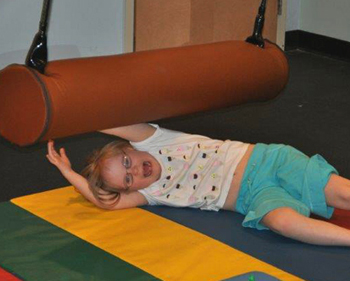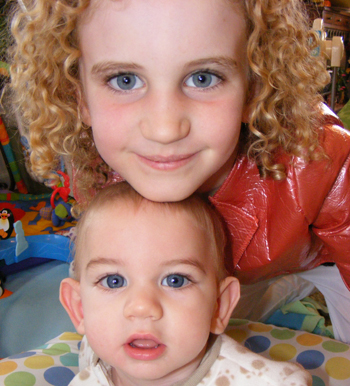
|
Pediatric Occupational, Physical, ABA/Behavioral, Feeding, Speech, and Language Therapies Main Clinic: 931-372-2567 1445 East 10th Street Cookeville, TN 38501 Email: [email protected] HIPAA Secure Email: [email protected] Fax: (931) 372-2572 ABA Clinic: 931-201-9534 400 Dubois Road Cookeville, TN 38501 Email: [email protected] Please call today to get started! Most insurances accepted! |

|
| Who needs therapy? | SE HABLA ESPAÑOL |
|
Home
> Birth to 36 months- developmental norms and when therapy is needed...
Birth to 36 months- developmental norms and when therapy is needed... |

|
Call 931-372-2567 FAX Orders 931-372-2572
Early Intervention is the key to better outcomes!
The earlier we can evaluate and intervene for children 3 and under, the more improved functioning we can see by Kindergarten. Medically necessary therapies are very different than what educational teachers or developmental therapy through TEIS or school systems can supply. Most children need both to make huge gains in development!
Using the Bayley Scales of Infant Development, Peabody Developmental Motor Scales and other standardized assessments we can do a full developmental testing of fine motor, gross motor, self help, expressive and receptive language skills to determine developmental age norms for your precious one.
Our OT, PT and Speech assessments can give us a full picture of where your child is developmentally and if there is greater than 20% delay, then medically necessary therapies can begin. The sooner we can evaluate, the sooner the family will know how help their precious one.
Research has proven that early intervention involving medical based therapies can create much better outcomes for children and help improve their development greatly. Starting therapy when they are under 3 years can often mean less therapy or none at all by the time they start Kindergarten! Don't delay...call today!
Here are some “red flags” to know when to refer for medically based pediatric therapies.
Gross Motor
If a child is…
· Not rolling by 6 months of age
· Not pushing up on straight arms, lifting his head and shoulders, by 7 months of age
· Not sitting independently by 7 months of age
· Not crawling (”commando” crawling–moving across the floor on his belly) by 9-10 months of age
· Not creeping (on all fours, what is typically called “crawling”) by 11 months of age or any abnormal creeping patterns like bottom shuffling or scooting.
· Not sitting upright in a child-sized chair by 9 months of age
· Not pulling to stand by 10 months of age
· Not standing alone by 12 months of age
· Not walking by 14 months of age
· Not jumping by 28 months of age
· Not independent on stairs (up and down) by 30 months of age
· “walking” their hands up their bodies to achieve a standing position
· only walking on their toes, not the soles of their feet
· frequently falling/tripping, for no apparent reason
· still “toeing in” at two years of age
· unusual creeping patterns
· Known medical diagnosis such as: Prematurity, low Apgar scores at birth, Down Syndrome, Cerebral Palsy, congenital heart condition, frequent ear infections, sensory avoiders, abnormal muscle tone, "floppy baby", "clumsy child" or Dyspraxia,
Fine Motor
If a child is…
· Frequently in a fisted position with both hands after 6 months of age or not holding up head and trunk
· Not bringing both hands to midline (center of body) by 10 months of age
· Not banging objects together by 10 months of age
· Not clapping their hands by 12 months of age
· Not deliberately and immediately releasing objects by 12 months of age
· Not able to tip and hold their bottle by themselves and keep it up, without lying down, by 12 months of age
· Still using a fisted grasp to hold a crayon at 18 months of age
· Not using a mature pincer grasp (thumb and index finger, pad to pad) by 18 months of age
· Not imitating a drawing of a vertical line by 24 months of age
· Not able to snip with scissors by 30 months
· Using only one hand to complete tasks
· Not being able to move/open one hand/arm
· Drooling during small tasks that require intense concentration
· Displaying uncoordinated or jerky movements when doing activities
· Crayon strokes are either too heavy or too light to see
· Medical diagnosis such as Down Syndrome, ASD, low or high muscle tone, coordination disorder, genetic disorders, Fragile X, CP
Cognition/Problem Solving
If a child is…
· Not imitating body action on a doll by 15 months of age (ie, kiss the baby, feed the baby)
· Not able to match two sets of objects by item by 27 months of age (ie, blocks in one container and people in another)
· Not able to imitate a model from memory by 27 months (ie, show me how you brush your teeth)
· Not able to match two sets of objects by color by 31 months of age
· Having difficulty problem solving during activities in comparison to his/her peers
· Unaware of changes in his/her environment and routine
Sensory
If a child is…
· Very busy, always on the go, and has a very short attention to task
· Often lethargic or low arousal (appears to be tired/slow to respond, all the time, even after a nap)
· A picky eater
· Not aware of when they get hurt (no crying, startle, or reaction to injury)
· Afraid of swinging/movement activities; does not like to be picked up or be upside down
· Showing difficulty learning new activities (motor planning)
· Having a hard time calming themselves down appropriately
· Appearing to be constantly moving around, even while sitting
· Showing poor or no eye contact
· Frequently jumping and/or purposely falling to the floor/crashing into things
· Seeking opportunities to fall without regard to his/her safety or that of others
· Constantly touching everything they see, including other children
· Hypotonic (floppy muscles, weak grasp, poor trunk tone, usually poor motor coordination)
· Having a difficult time with transitions between activity or location
· Overly upset with change in routine
· Hates bath time or grooming activities such as; tooth brushing, hair brushing, hair cuts, having nails cut, etc.
· Afraid of/aversive to/avoids being messy, or touching different textures such as grass, sand, carpet, paint, playdoh, etc.
Possible visual problems may exist if the child…
· Does not make eye contact with others or holds objects closer than 3-4 inches from one or both eyes. Any eye turns in or out separate from another.
· Does not reach for an object close by
· Avoids doing near work, poor at puzzles, and avoids eye contact
Self-Care
If a child is…
· Having difficulty biting or chewing food during mealtime
· Needing a prolonged period of time to chew and/or swallow
· Coughing/choking during or after eating on a regular basis
· Demonstrating a change in vocal quality during/after eating (i.e. they sound gurgled or hoarse when speaking/making sounds)
· Having significant difficulty transitioning between different food stages
· Not feeding him/herself finger foods by 14 months of age
· Not attempting to use a spoon by 15 months of age
· Not picking up and drinking from a regular open cup by 15 months of age
· Not able to pull off hat, socks or mittens on request by 15 months of age
· Not attempting to wash own hands or face by 19 months
· Not assisting with dressing tasks (excluding clothes fasteners) by 22 months
· Not able to deliberately undo large buttons, snaps and shoelaces by 34 months
Social/Emotional/Play Skills
If a child is…
· Not smiling by 4 months
· Not making eye contact during activities and interacting with peers and/or adults
· Not performing for social attention by 12 months “in their own world”
· Not imitating actions and movements by the age of 24 months
· Not engaging in pretend play by the age of 24 months
· Not demonstrating appropriate play with an object (i.e. instead of trying to put objects into a container, the child leaves the objects in the container and keeps flicking them with his fingers)
· Fixating on objects that spin or turn (i.e. See ‘n Say, toy cars, etc.); also children who are trying to spin things that are not normally spun
· Having significant difficulty attending to tasks
· Getting overly upset with change or transitions from activity to activity
Communication:
· Difficulty making and maintaining eye contact with an adult by 6 months
· No big smiles or other warm, joyful expressions during interaction with another person by 6 months
· No back-and-forth sharing of sounds, smiles, or other facial expressions by 9 months
· No babbling by 12 months
· No back-and-forth gestures, such as pointing, showing, reaching, or waving by 12 months
· No consistent responding to their names by 12 months
· No words by 16 months
· No following simple and familiar directions by 18 months
· No two-word meaningful phrases without imitating or repeating & says at least 50 words by 24 months
· No back-and-forth conversational turn-taking by 30 months
· Any loss of speech or babbling or social skills (like eye contact) at any age
Most babies who are doing well with development exceed these milestones by leaps and bounds, meeting them months earlier than listed here. These are very, very low thresholds for all the skills listed. If your child or patient is not meeting these basic guidelines, please don’t dismiss your feelings. Seek professional help from your pediatrician and ask for a medical based therapy evaluation. The earlier we can evaluate, the earlier we can see improved development!
Site empowered by
WebOnTheFly